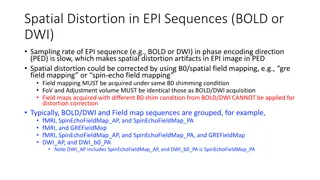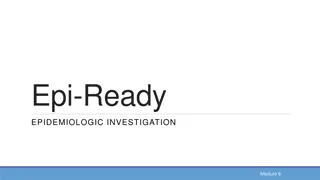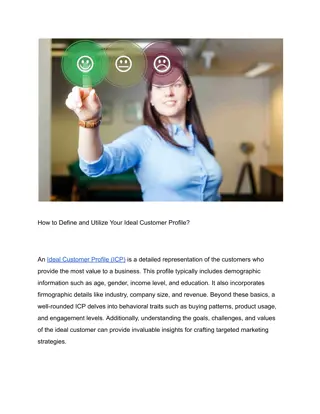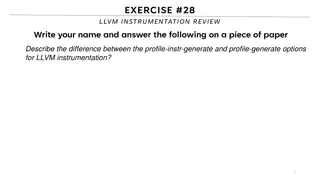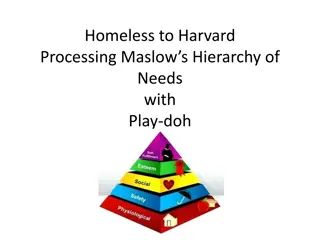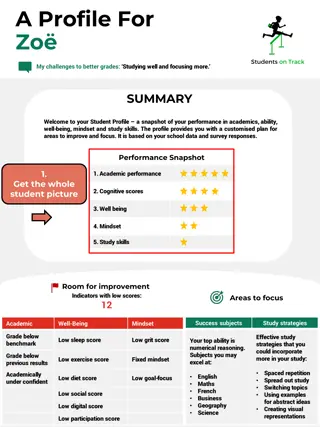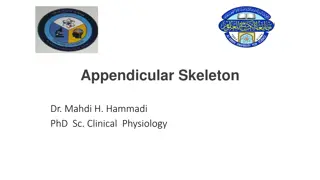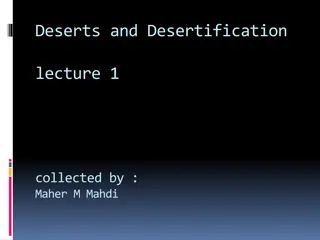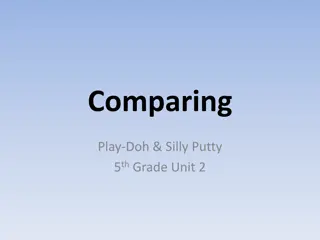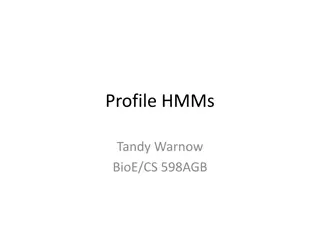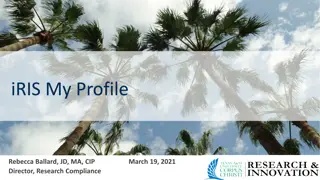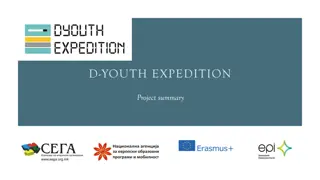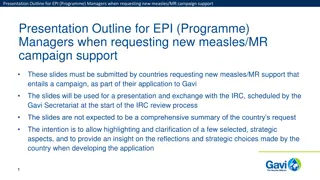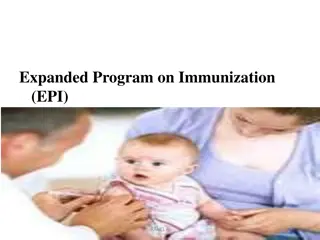
New Mexico Substance Abuse Epidemiology Profile 2017
Explore the updated data on substance abuse in New Mexico for 2016, including mortality rates, alcohol-related deaths, drug overdose statistics, and more. Discover trends in emergency department visits and hospital discharges related to substance abuse. Gain insights into the impact of substance abuse on different demographics in New Mexico, as reported in the Substance Abuse Epidemiology Profile.
Download Presentation

Please find below an Image/Link to download the presentation.
The content on the website is provided AS IS for your information and personal use only. It may not be sold, licensed, or shared on other websites without obtaining consent from the author. If you encounter any issues during the download, it is possible that the publisher has removed the file from their server.
You are allowed to download the files provided on this website for personal or commercial use, subject to the condition that they are used lawfully. All files are the property of their respective owners.
The content on the website is provided AS IS for your information and personal use only. It may not be sold, licensed, or shared on other websites without obtaining consent from the author.
E N D
Presentation Transcript
2017 NEW MEXICO SUBSTANCE ABUSE EPIDEMIOLOGY PROFILE https://nmhealth.org/data/view/substance/2067/ Ihsan Mahdi, MD MPH Substance Abuse Epidemiologist Substance Abuse Epidemiology Section Epidemiology and Response Division New Mexico Department of Health
WHAT HAS BEEN UPDATED? Death Data (BVRHS): 2016 Emergency Department Visits (DOH-EDD): 2016 Hospital Inpatient Discharges (DOH-HIDD): 2016 Behavioral Risk Factor Surveillance System (BRFSS): 2016 Updated Appendices
MORTALITY Indicator 2015 65.7 35.8 2016 66.0 35.0 Alcohol-related Deaths Alcohol-related Chronic Disease Deaths Alcohol-related Chronic Liver Disease Deaths 21.5 21.5 Alcohol-related Injury Deaths 29.9 31.0 Alcohol-related Motor Vehicle Crash Deaths 4.7 Data not available at print time. Smoking-related Deaths Drug Overdose Deaths Suicide 95.6 24.8 23.5 95.2 24.8 22.2 Rate per 100,000, age-adjusted to the 2000 US standard population Data Source: November 2017 Substance Abuse Epidemiology Profile-Consequences section
MORTALITY Alcohol-Related Death Rates*, New Mexico and United States, 2012-2016 70 66.0 65.7 60 59.4 50 54.4 26.0 53.0 29.4 NM - Total Alcohol-Related (A-R) 40 32.2 30.1 Rate* 30 US - Total Alcohol-Related 20 10 0 Year New Mexico s total Alcohol-related death rate is 1.9 times the national rate, American Indians have the highest rates (more in men than women), and McKinley and Rio Arriba counties have rates that are 4-5 times the national rate. Rate per 100,000, age-adjusted to the 2000 US standard population Data Source: November 2017 Substance Abuse Epidemiology Profile-Consequences section
MORTALITY Hispanic men had the highest total drug overdose death rate (36.7) Rio Arriba County had the highest death rate (89.9), with close to half of New Mexico counties showing total drug overdose death rates one and a half times higher than the US rate (16.3 in 2015). 41% of unintentional drug overdose deaths were caused by prescription drugs, while 40% were caused by illicit drugs, and 19% involved both. New Mexico s suicide rate in 2016 (22.2) was 1.7 times higher than the national rate in 2016 (13.3). Catron and Hidalgo counties had the highest rates (83.5 and 57.5 respectively). Non-Hispanic Whites had the highest rates overall (27.4). Rate per 100,000, age-adjusted to the 2000 US standard population Data Source: November 2017 Substance Abuse Epidemiology Profile-Consequences section
EMERGENCY DEPARTMENT & HOSPITAL DISCHARGES Indicator 2015* 57.7 2016* 83.8 Chronic Liver Disease Hospital Discharge Opioid Overdose-related Emergency Department Visits 69.1 76.6 Rate per 100,000, age-adjusted to the 2000 US standard population Data Source: November 2017 Substance Abuse Epidemiology Profile-Consequences section
EMERGENCY DEPARTMENT & HOSPITAL DISCHARGES Excessive alcohol use is the most common cause of CLD. CLD can develop over 20-30 years in some cases, and data on hospitalizations can provide information on CLD risk at an earlier time point in the disease s development than AR-CLD mortality. CLD hospitalizations include all hospital stays where the primary diagnosis was determined to be CLD. CLD hospitalizations measure number of hospital stays rather than individuals diagnosed with CLD (i.e. a person can be hospitalized more than once). Rate per 100,000, age-adjusted to the 2000 US standard population Data Source: November 2017 Substance Abuse Epidemiology Profile-Consequences section
EMERGENCY DEPARTMENT & HOSPITAL DISCHARGES CLD Discharge Rates* New Mexico 2010-2016 100.0 83.8 81.0 75.3 74.1 80.0 66.0 59.2 57.7 60.0 Rate* 40.0 20.0 0.0 2010 2011 2012 2013 2014 2015 2016 Year The rate of CLD hospitalizations in 2016 (83.8) has increased 41.6% since 2010 (59.2). McKinley County had the highest rate of CLD hospitalizations (146.0), followed by Cibola (123.8), the state rate was (74.3). Rate per 100,000, age-adjusted to the 2000 US standard population Data Source: November 2017 Substance Abuse Epidemiology Profile-Consequences section
EMERGENCY DEPARTMENT & HOSPITAL DISCHARGES Mortality is just one, and the most extreme, of the health outcomes associated with drug abuse. In the U.S., between 2004 and 2009, there was a 98.4% increase in emergency department (ED) visits related to misuse or abuse of prescription drugs, particularly opioids. In NM, the emergency department dataset (EDD) is collected in accordance with the NM Public Health Act and New Mexico Administrative Code 7.4.3.10 Rate per 100,000, age-adjusted to the 2000 US standard population Data Source: November 2017 Substance Abuse Epidemiology Profile-Consequences section
EMERGENCY DEPARTMENT & HOSPITAL DISCHARGES Opioid Overdose Related Emergency Department Visit Rates*, New Mexico, 2010-2016 100.0 76.7 80.0 69.4 69.1 61.9 59.7 59.6 60.0 48.2 Rate* 40.0 20.0 0.0 2010 2011 2012 2013 2014 2015 2016 Year Between 2010 and 2016, the rate of opioid-related overdose emergency department visits increased by almost 60%. Rio Arriba (207.8), San Juan (135.2), and Taos (130.3) had the highest rates of opioid-related overdose emergency department visits during 2012-2016. Rate per 100,000, age-adjusted to the 2000 US standard population Data Source: November 2017 Substance Abuse Epidemiology Profile-Consequences section
BRFSS-MENTAL HEALTH Indicator Frequent Mental Distress (past 30 days) 2013-2015 11.9%* 2014-2016 12.0%* 2015 10.3%** 2016 9.9%** Adult Current Depression (past 2 weeks) *Estimate of percent of people in population group who reported Frequent Mental Distress in past 30 days **Estimate of percent of people in population group who reported current (past 2-week) depression based on DSM-IV criteria Data Source: November 2017 Substance Abuse Epidemiology Profile-Mental Health section
BRFSS-MENTAL HEALTH Frequent Mental Distress (FMD) is based on the single question, "How many days during the past 30 days was your mental health not good?" Respondents who report that they experienced 14 or more days when their mental health was "not good" are classified as experiencing FMD. Current depression is defined using the Diagnostic and Statistical Manual of Mental Disorders, 4th Edition (DSM-IV) criteria, based on respondents answers to Patients Health Questionnaire (PHQ-8). More than half (52%) of FMD respondents were diagnosed with current depression. Depression was more common among Hispanic females (11.5%), and White females (9.6%) than American Indian females (6.8%) Data Source: November 2017 Substance Abuse Epidemiology Profile-Mental Health section
BRFSS-MENTAL HEALTH Chronic Health Conditions by Depression Status and Sex, New Mexico, 2016 60 50 Percent (%) 40 30 Physical inactivity (2011) Current smoking Binge drinking Drinking and driving 20 10 0 Depression Depression Depression None None None Total Male Female Data Source: November 2017 Substance Abuse Epidemiology Profile-Mental Health section
BRFSS- ALCOHOL AND TOBACCO CONSUMPTION Indicator 2013-2015 13.8%** 5.4%** 2014-2016 13.9%** 5.2%** Adult Binge Drinking* Adult Heavy Drinking Adult Drinking and Driving Adult Smoking 1.1%** 1.0%** 18.6%** 17.3%** *Binge drinking definition: 1998-2005, drinking five or more drinks on an occasion at least once in the past 30 days; 2006-present, drinking five or more drinks (for men) or four or more drinks (for women) on an occasion at least once in the past 30 days. ** Estimate of percent of people in population group who reported binge drinking at least once in past 30 days Heavy drinking definition: drinking more than 2 drinks/day on average (for men) or more than 1 drink/day (for women) Data Source: November 2017 Substance Abuse Epidemiology Profile-Consumption section
BRFSS-ALCOHOL CONSUMPTION Binge Drinking (past 30 days)* by Age, Adults Aged 18+, New Mexico, 2012-2016 35 Percent (%) 24.5 30 23.1 Age 18-24 21.0 19.3 25 21.1 20 17.8 14.1 Age 25-64 15 17.1 16 15.8 10 3.9 3.7 3.5 3.4 2.9 Age 65+ 5 0 2012 2013 2014 2015 2016 Binge drinking rates decrease with age and are higher among males. Data Source: November 2017 Substance Abuse Epidemiology Profile-Consumption section
BRFSS-ALCOHOL CONSUMPTION Heavy Drinking (past 30 days)*, Adults Aged 18+, New Mexico, 2012-2016 8 7 5.9 5.7 5.5 5.5 6 Percent (%) 4.5 5 4 3 2 1 0 For the period 2012-2016 heavy drinking prevalence is lower among adults in New Mexico (5.2%) than in the US overall (6.5%), and more reported by men than women. Data Source: November 2017 Substance Abuse Epidemiology Profile-Consumption section
BRFSS-ALCOHOL AND TOBACCO CONSUMPTION American Indian males had the highest reported rate of heavy drinking (7.0%) followed by Hispanic males (6.7%). However, among women, Black females had the highest rate (11.7%), followed by White women (6.5%). Hidalgo county showed the highest reported rates for both binge and heavy drinking (20.8% and 11.7% respectively). New Mexico men were three times more likely to report drinking and driving than women (1.6% vs. 0.5%). In 2016, current smoking rates among adults in New Mexico (16.6%) were slightly less than the US overall (17.0%). Data Source: November 2017 Substance Abuse Epidemiology Profile-Consumption section
NATIONAL SURVEY ON DRUG USE AND HEALTH (NSDUH) Changes to the NSDUH Questionnaire and data collection: In 2015, a number of changes were made to the NSDUH questionnaire and data collection procedures resulting in the establishment of a new baseline for a number of measures. Therefore, estimates for several measures included in prior reports are not available. For details, see Section A of the "2014-2015 NSDUH: Guide to State Tables and Summary of Small Area Estimation Methodology" at: http://www.samhsa.gov/data/.
THE 2012-2014 NSDUH Measures used: ALCOHOL Past Month Alcohol Use Past Month Binge Alcohol Use Perceptions of Great Risk of Having Five or More Drinks of an Alcoholic Beverage Once or Twice a Week ILLICIT DRUGS Past Month Illicit Drug Use Past Year Marijuana Use Past Month Marijuana Use Past Month Use of Illicit Drugs Other Than Marijuana3 Past Year Cocaine Use Past Year Nonmedical Pain Reliever Use Perception of Great Risk of Smoking Marijuana Once a Month Average Annual Marijuana Initiation Rate TOBACCO Past Month Tobacco Product Use5 Past Month Cigarette Use Perceptions of Great Risk from Smoking One or More Packs of Cigarettes per Day *Data reported by age group, and NM&US health region, as percentages and 95% confidence intervals.
THE 2014-2015 NSDUH Measures used*: ILLICIT DRUGS Past Year Marijuana Use Past Month Marijuana Use Past Year Cocaine Use Past Year Heroin Use First Use of Marijuana ALCOHOL Past Month Alcohol Use Past Month Alcohol Use (12-20 Years) PAST YEAR ALCOHOL USE DISORDER Alcohol Dependence Alcohol Use Disorder TOBACCO PRODUCTS Past Month Tobacco Product Use Past Month Cigarette Use PAST YEAR MENTAL HEALTH ISSUES Major Depressive Episode Serious Mental Illness Any Mental Illness Had Serious Thoughts of Suicide *Data reported by age group, and US health region, as estimated numbers (in thousands), and percentages.
THANK YOU! Questions? Ihsan.mahdi@state.nm.us Ihsan.mahdi@state.nm.us (505) 827-0887


